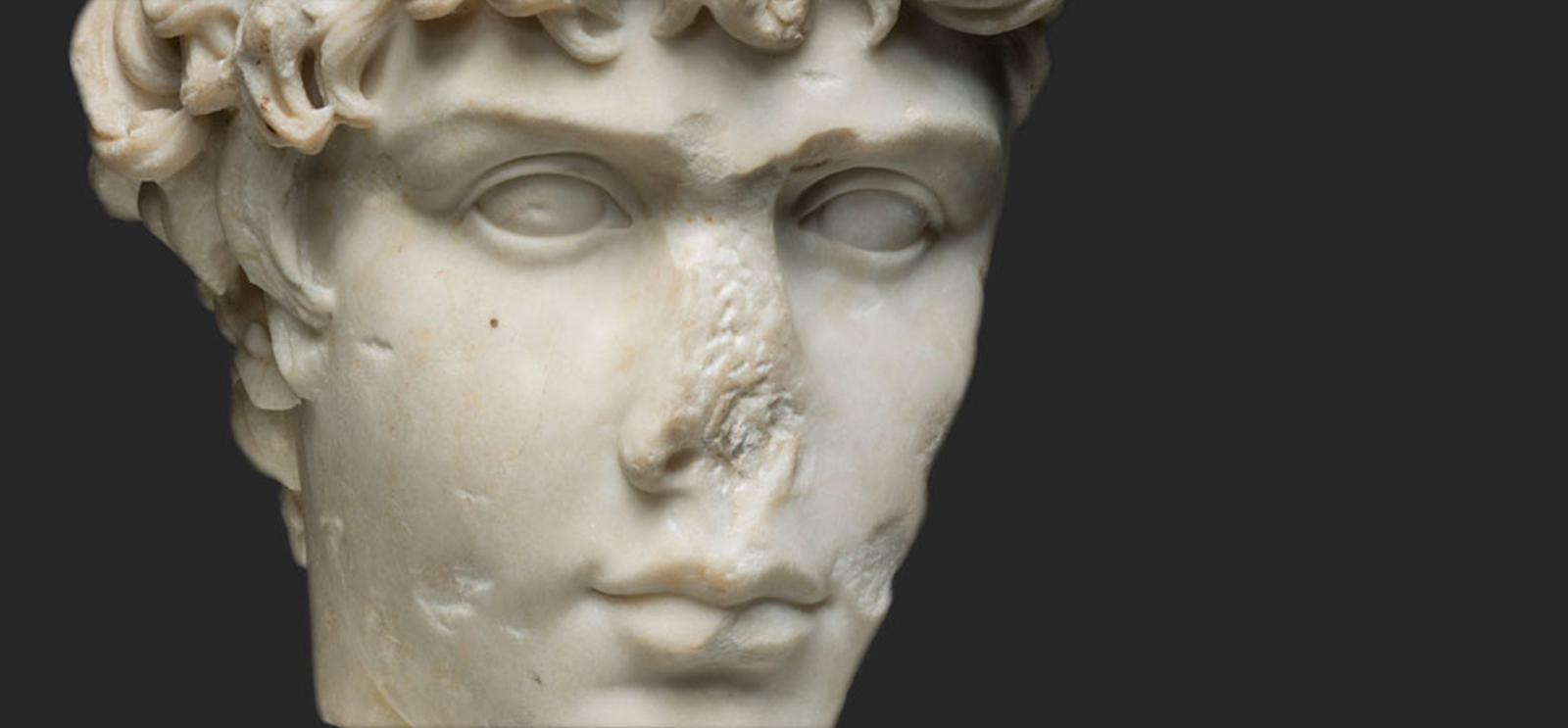
Scholars still don’t know when or how an ancient sculpture of the Greek youth Antinous broke in two, but today it’s been digitally reunited, thanks in part to the keen eye of W. Raymond Johnson, PhD’92. (Photo courtesy the Art Institute of Chicago)
A scholar’s chance observation in an Italian museum helps solve an art history mystery.
On a trip to Rome in 2005, UChicago Egyptologist W. Raymond Johnson, PhD’92, spotted a familiar face. It was a marble bust of a second-century Greek youth known as Antinous, displayed in a gallery at the Palazzo Altemps museum.
It reminded him instantly of a similar piece he had seen at the Art Institute of Chicago—with one important exception. “The face I saw in Rome just didn’t seem right,” says Johnson, who realized it was a restoration. “The only original part was the back of the head and shoulders.”
Then he noticed something else: both pieces shared the same unusual vertical crack visible along the left side of the face—a striking similarity that led Johnson to believe that the Antinous fragment, thousands of miles away in Chicago, belonged on the bust in Rome. “I have the worst memory in the entire world for most things, but give me a piece of sculpture—part of a head or a relief of Tutankhamen—and for some reason a part of my brain really hangs on to that,” says Johnson.
Johnson contacted colleagues at the Art Institute, beginning a decade-long investigation to test his hypothesis. A collaborative effort between the Art Institute and the Palazzo Altemps ultimately solved a centuries-old puzzle and proved the two sections had once been one. The work was featured in a recent Art Institute exhibition, A Portrait of Antinous, in Two Parts.
As director of the Oriental Institute’s Epigraphic Survey, based at Chicago House in Luxor, Egypt, Johnson has spent decades piecing ancient sculptures and reliefs back together. Early in his career, he documented wall fragments from the majestic Luxor Temple (constructed in roughly 1360 BCE) by drawing them. Very quickly, he made connections that others never had. “I could see that many fragments fit together,” Johnson says. “I guess you’d say I have an eye.”
Since then, he has identified, documented, and pieced together thousands of inscribed wall fragments, in the process preserving them and, in some cases, restoring them to temple walls.
Johnson is an aficionado of the art that flourished during the reign of Roman emperor Hadrian (117–138 CE), a period replete with representations of Antinous. The exceptionally handsome young man, whom scholars believe may have been Hadrian’s lover, drowned in the Nile in 130 CE, while accompanying him on a tour of Egypt. Grief stricken, the emperor declared Antinous a god and founded the city Antinoupolis near the site of his death. Images of Antinous, with his signature curly hairstyle, began to appear on coins and medallions, and he became the subject of numerous sculptures.
Johnson was not the first to raise questions about the origins of the Art Institute’s Antinous. When the museum’s first president, Charles Hutchinson, purchased the piece in 1898, it was in the form of a relief on a marble panel. As early as 1913, curators wondered whether the portrait might originally have belonged to a bust, so the idea that the relief was part of a larger sculpture was not new, according to Karen Manchester, chair and curator of ancient art in the museum’s Department of Ancient and Byzantine Art. “But from the moment I read Ray’s email, I was intrigued,” Manchester says. “Had he really found the rest of it? A trip to Rome convinced me that he had done so, but then came the challenge of proving he was right.”
An important leap forward came when an Italian lab tested samples of stone from each section. The test revealed both pieces could have been sculpted from the same block of Carrara marble. Scholars also delved into archives in Chicago and Rome to unearth new details about the two works. While they were not able to establish definitively when and how the bust of Antinous fractured, they believe it was in two pieces by the 1640s, and may have broken as early as 410 CE—possibly a casualty of the Visigothic invasion of Rome.
To determine whether the Art Institute’s fragment aligned with the bust, three-dimensional scans of the heads of both pieces were created, allowing scholars and artists to noninvasively establish orientation and fit. To be absolutely sure the two pieces matched, the team used 3-D printers to create replicas of each museum’s section of Antinous and fused them together with modeling clay. From this mold, a plaster cast was generated, reproducing the sculpture in its original form.
“This shows what’s possible with the fantastic new digital technology we have available,” says Johnson. “These tools have directly benefited archaeology—they facilitate documentation, but also the analysis and ultimately the reconstruction of ancient fragmentary monuments.”
